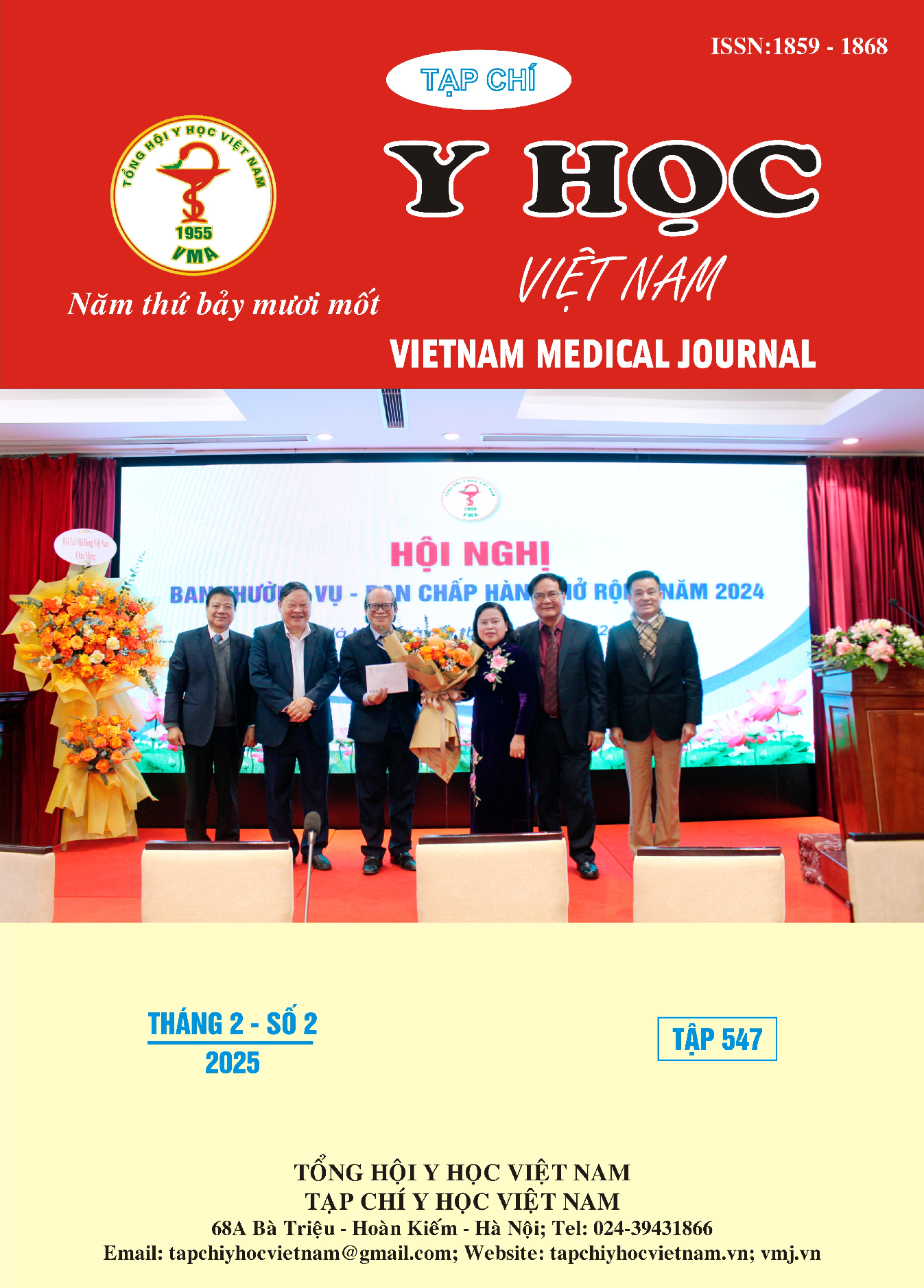NGHIÊN CỨU GIÁ TRỊ CỦA CHỤP CẮT LỚP VI TÍNH HAI MỨC NĂNG LƯỢNG TRONG CHẨN ĐOÁN THUYÊN TẮC PHỔI CẤP
Nội dung chính của bài viết
Tóm tắt
Mục tiêu: Mô tả đặc điểm hình ảnh thuyên tắc phổi cấp trên chụp cắt lớp vi tính hai mức năng lượng (DECT) và xác định mối liên quan giữa DECT với CTPA và các chỉ số cận lâm sàng khác như D-dimer và NT-proBNP. Phương pháp: Nghiên cứu mô tả cắt ngang thực hiện trên 56 bệnh nhân được chẩn đoán thuyên tắc phổi bằng CTPA và DECT tại Bệnh viện Nhân Dân Gia Định từ tháng 10/2022 đến tháng 4/2024. Kết quả: DECT vượt trội hơn CTPA trong phát hiện thuyên tắc ở các nhánh nhỏ của động mạch phổi. Kết quả cho thấy sự tương quan chặt chẽ giữa mức NT-proBNP, D-dimer và mức độ thuyên tắc trên hình ảnh DECT. Kết luận: DECT là phương pháp chẩn đoán giá trị trong phát hiện thuyên tắc phổi cấp, giúp nâng cao hiệu quả lâm sàng và hỗ trợ đưa ra các quyết định điều trị kịp thời.
Chi tiết bài viết
Từ khóa
Chụp cắt lớp vi tính động mạch phổi (CTPA), Chụp cắt lớp vi tính hai mức năng lượng (DECT), Thuyên tắc phổi, D-dimer, NT-proBNP
Tài liệu tham khảo
2. Mao X, Wang S, Jiang X, Zhang L, Xu W. Diagnostic Value of Dual-Source Computerized Tomography Combined with Perfusion Imaging for Peripheral Pulmonary Embolism. Iranian journal of radiology : a quarterly journal published by the Iranian Radiological Society. Apr 2016;13(2):e29402. doi:10.5812/iranjradiol.29402
3. Im DJ, Hur J, Han KH, Lee HJ, Kim YJ, Kwon W, et al. Acute Pulmonary Embolism: Retrospective Cohort Study of the Predictive Value of Perfusion Defect Volume Measured With Dual-Energy CT. AJR American journal of roentgenology. Nov 2017;209(5):1015-1022. doi:10.2214/ajr.17.17815
4. Abdellatif W, Ebada MA, Alkanj S, Negida A, Murray N, Khosa F, et al. Diagnostic Accuracy of Dual-Energy CT in Detection of Acute Pulmonary Embolism: A Systematic Review and Meta-Analysis. Canadian Association of Radiologists Journal. 2021/05/01 2020;72(2):285-292. doi:10.1177/0846537120902062
5. Meinel FG, Nance JW, Jr., Schoepf UJ, Hoffmann VS, Thierfelder KM, Costello P, et al. Predictive Value of Computed Tomography in Acute Pulmonary Embolism: Systematic Review and Meta-analysis. The American journal of medicine. Jul 2015;128(7):747-59.e2. doi:10.1016/j.amjmed.2015.01.023
6. Thành NT, Trung VT, Tiến NC, Thông PM. Chụp cắt lớp vi tính hai mức năng lượng phát hiện tắc đm phổi: lợi ích thêm vào của bản đồ iodine. Tạp chí Điện quang & Y học hạt nhân Việt Nam. 2022;44
7. Thieme SF, Johnson TR, Lee C, McWilliams J, Becker CR, Reiser MF, et al. Dual-energy CT for the assessment of contrast material distribution in the pulmonary parenchyma. AJR American journal of roentgenology. Jul 2009;193(1):144-9. doi:10.2214/ajr.08.1653
8. Weidman EK, Plodkowski AJ, Halpenny DF, Hayes SA, Perez-Johnston R, Zheng J, et al. Dual-Energy CT Angiography for Detection of Pulmonary Emboli: Incremental Benefit of Iodine Maps. Radiology. Nov 2018;289(2):546-553. doi:10.1148/radiol.2018180594
9. Dako F, Hossain R, Jeudy J, White C. Dual-energy CT evidence of pulmonary microvascular occlusion in patients with sickle cell disease experiencing acute chest syndrome. Clinical imaging. Oct 2021;78:94-97. doi:10.1016/j.clinimag.2021.03.018
10. Barco S, Ende-Verhaar YM, Becattini C, Jimenez D, Lankeit M, Huisman MV, et al. Differential impact of syncope on the prognosis of patients with acute pulmonary embolism: a systematic review and meta-analysis. European heart journal. Dec 14 2018;39(47):4186-4195. doi:10.1093/eurheartj/ehy631


